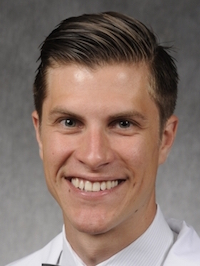By Frank Zadravecz, MPH
Our first foray into alarm data felt a bit like trekking through uncharted jungle. We were enticed by legends of untold riches in patient safety awaiting our discovery. We believed that we could label alarms that were nuisance and laud the more predictive ones. Like all memorable and perilous journeys, we lacked a detailed roadmap but were driven by the adventure.
There is much more information collected in our hospital than I ever realized. As I searched for the source of audible alarms on our wards, the inaudible tangle of non- and miscommunicating data feeds were equally as troubling. I began to think that as the foundation for a hospital’s data infrastructure is laid, initial concerns focus on integration and user-friendliness. However as a medical center grows, its technological growing pains can easily constrain interoperability and accessibility. When I consider the mounting pressures a hospital faces to implement new technology for outcome reporting and patient safety standards, I can see why we lose focus on the meaning behind what we collect. Simply put, when it comes to technology and improving patient safety we are stuck behind the IT learning curve. With the fast turnover of hardware and frequent updates of software, our data feeds can lose important relationships, become independent of each other and lack cohesive monitoring across departments. As data disconnects compound, the increasing amount of unmanaged information can intensify already burdensome alarms.
Within the complex data web we’ve been working through, there is the potential to automate our clinical workflow around patient alarms as well as create an extensive network for alarm data sharing between hospital stakeholders for the purpose of quality improvement. In light of this, it will be revealing to see the pathway our hospital ultimately chooses when implementing our findings. Is a widespread implementation of our risk stratification tool the correct starting point to appropriately categorize patients? Should we allow caregivers bedside access to change alarm thresholds? Will alarm management become a part of care discussions during interdisciplinary patient handoffs? Are we perhaps missing a more important intervention point?
Once we clear the necessary tangles, the key to tackling alarm fatigue at our hospital will be finding creative ways to place alarm management back in the hands of clinicians while removing the workflow burdens that currently prevent it.
As medical students we are taught about the “hidden curriculum” in clinical care, the behaviors and actions modeled for us by physicians who are further along in their training than we are. My summer research investigating the predictive value of physiologic patient alarms for clinical deterioration and the effect of nurse alarm burden on patient outcomes has become a hidden curriculum for me. I take away the understanding that while big data allows for changes that streamline our work, it shouldn’t become a substitute for the time we spend with patients or our interactions with other clinicians. The systems we monitor our patients with should contextualize our care, but it shouldn’t replace it.
During my past ten weeks in the inaugural cohort of SHM Student Hospitalist Scholars I have been encouraged that others are asking these same questions about how to carefully improve patient outcomes. To this aim, the central and actionable role that bedside alarms have in inpatient safety makes for enticing and relatively low-hanging fruit. My greatest hope is that this current investment share in reducing alarm fatigue can set hospital and interagency precedent for further interdisciplinary process improvement.
At our institution, University of Chicago Medical Center, I feel challenged to help imagine data solutions that can adapt and grow alongside our clinicians and medical center. As a medical student, I am compelled to imagine a professional world where my patient care is both efficient and prioritizes meaningful interprovider communication. Dr. Don Berwick explains this cooperation and systems design as the scheme we create together to organize a world that threatens otherwise to become chaotic and overtake us. Perhaps my description of our alarm data as a jungle fits after all.
 Frank Zadravecz, MPH, is an alumnus of the Columbia University Mailman School of Public Health, a rising second year medical student at the University of Illinois at Chicago College of Medicine, and a Society for Hospital Medicine Student Hospitalist Scholar at the University of Chicago Medical Center. You can follow Frank on Twitter @frankzadravecz.
Frank Zadravecz, MPH, is an alumnus of the Columbia University Mailman School of Public Health, a rising second year medical student at the University of Illinois at Chicago College of Medicine, and a Society for Hospital Medicine Student Hospitalist Scholar at the University of Chicago Medical Center. You can follow Frank on Twitter @frankzadravecz.



Leave A Comment